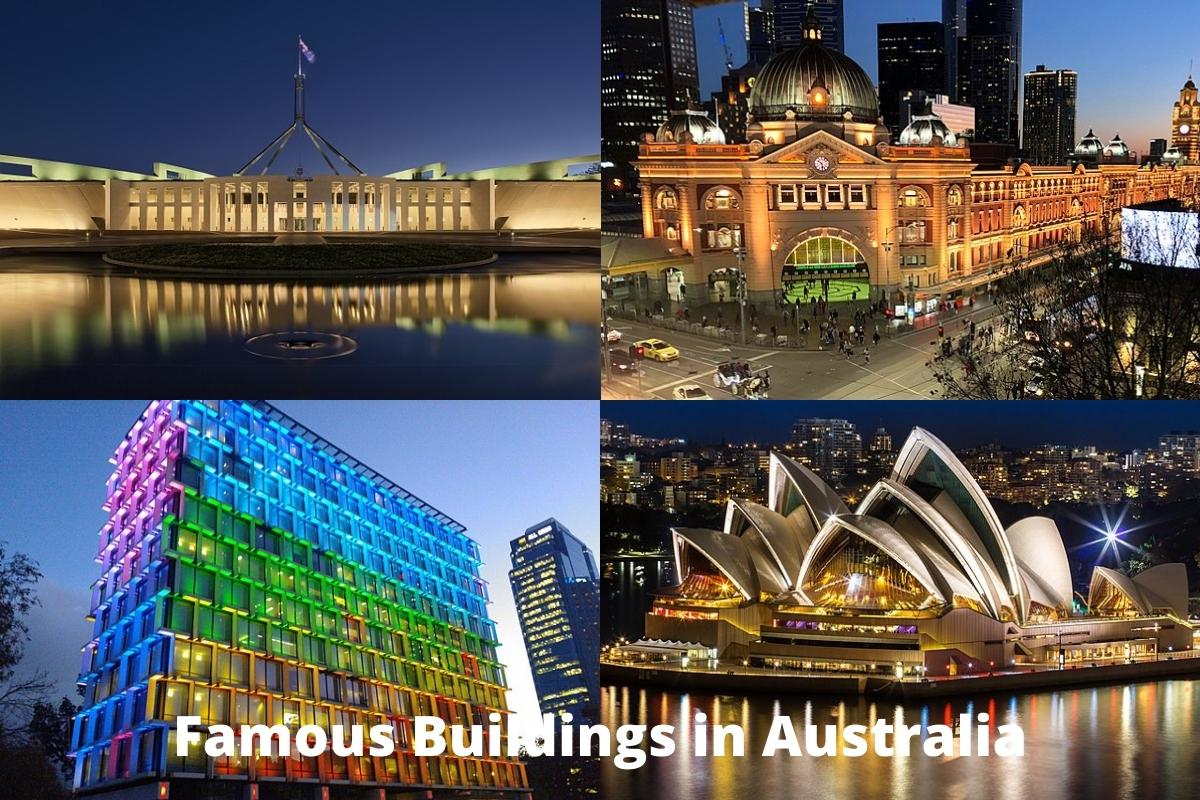Australia is known for having a distinct culture that’s different from the rest of the countries that surround it. The island-nation is also one of the world’s 7 continents and some of the larger cities in Australia feature famous buildings that are either iconic or serve as local landmarks.
Like most other English-speaking countries, Australia’s architecture has been heavily-influenced by Neoclassical, Modernist and other styles.
In this article, we will examine 10 of the most famous buildings in Australia, as well as some of the more detailed information about the architects who helped design these buildings and their purpose.
Famous Buildings in Australia
1. Sydney Opera House
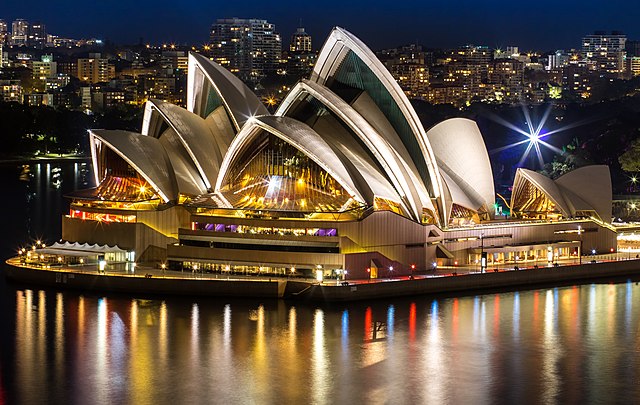
There is virtually no debate among those in Australia or the city of Sydney that the most iconic building in the country is the Sydney Opera House.
This distinctly-built structure is considered to be one of the most iconic buildings in the entire world due to its unique appearance. It was designed by Danish architect, Jørn Utzon, who is known for creating structures that feature a modernist-style of architecture.
The Sydney Opera House is a large collection of theaters and halls that combine to form a vast building on the edge of the shoreline in Sydney near the Royal Botanic Gardens of Sydney.
It’s appearance was designed by Utzon to resemble a sailing ship on the ocean with its different sails unfurled and filled with wind. It serves as a venue for various forms of performing arts in Sydney and it is a local landmark for the capital city.
Also Read: Famous Australian Architects
Construction began on the building in the spring of 1959 and it would take another 14 years before the Sydney Opera House was finally completed.
It is a relatively large building compared to most of the surrounding structures in the immediate area and consists of more than 191,000 square feet of space that is home to 7 different studios or theaters that are all elaborately decorated on the building’s interior.
2. Royal Exhibition Building
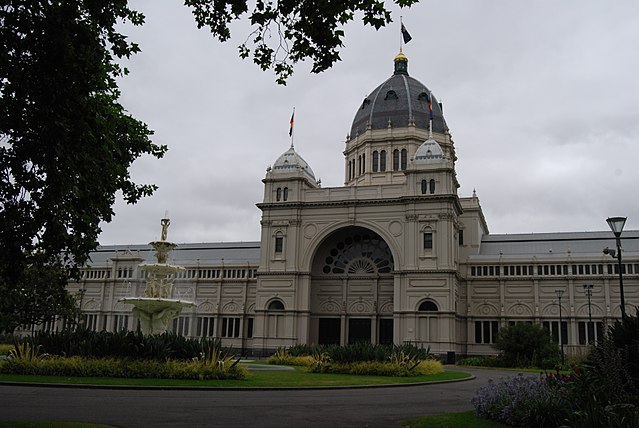
Melbourne is one of the largest cities on Australia’s west coast and the Royal Exhibition Building is one of the area’s most iconic buildings. It’s located in the heart of the city of Melbourne and features a large garden that’s known as the Carlton Gardens.
It was designed and built by Joseph Reed, who is regarded as one of the most prolific Victorian architects from the late 19th century in Australia.
Construction on the Royal Exhibition Building began in the spring of 1879 and it was intended to serve as a large exhibition hall in which prominent art exhibitions would be held.
The overall construction only took one year and the Royal Exhibition Building was completed in 1880. Throughout the many decades since it was built, it has served a variety of purposes and has been used as a vaccination center since the Covid-19 pandemic took place in 2020.
The Royal Exhibition Building has been restored in recent years and it was named as a UNESCO World Heritage Site in 2004 as it was one of the last remaining Victorian-style buildings left in Melbourne, as well as Australia.
The building sits on nearly 3,000,000 square feet of space and features many different theaters and halls that are lavishly-decorated on the Royal Exhibition Building’s interior.
3. Parliament House, Canberra
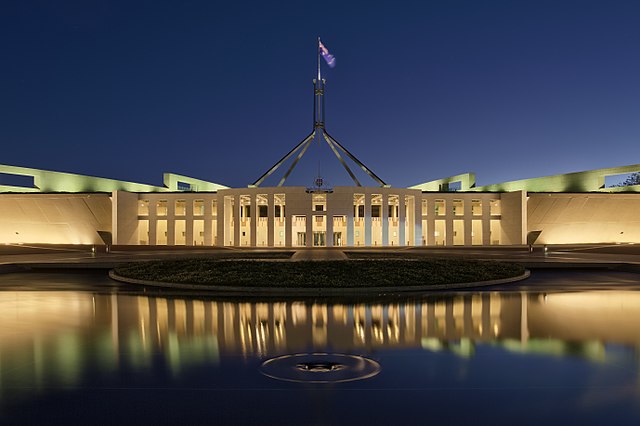
One of Australia’s most greatest governmental buildings is the Parliament House, Canberra, which is often referred to simply as Parliament or Capital Hill.
It is the official meeting place of the Parliament of Australia and serves as the official seat of the country’s legislative branch of governance.
The structure is a relatively new one that was designed by Romaldo Giurgola, a notable Italian architect who is known for designing and building various public buildings and university structures all over the world.
The Parliament House, Canberra sits on the site of the former Parliament House, which was built during the 1920’s. Construction on the new government center began in 1980 and the project would take until 1988 until it was finally finished and officially opened.
The massive building contains more than 4,700 individual rooms that serve as offices for the various representatives, as well as the main foyer and Great Hall where official government business is conducted.
The structure is a combined total of more than 2,700,000 square feet and serves a variety of other functions outside of governmental functions.
It holds a massive number of books, articles, and letters that were written by Australia’s most notable politicians over the decades since the original Parliament building stood.
4. Q1 Tower
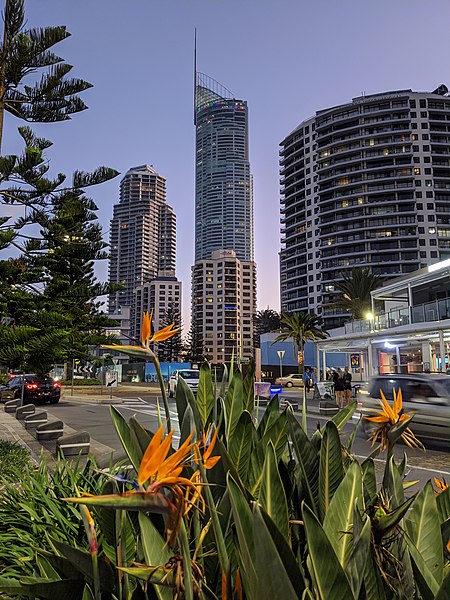
The Queensland’s Q1 Tower is a massive skyscraper is located in the middle of downtown Queensland and offers an imposing presence as the city’s tallest building by many stories.
The tower was designed by the world-renown architectural firm, Sunland Group and is virtually double the height of nearly all other skyscrapers and buildings located within the city of Queensland.
The Q1 Tower was designed in the late 1990’s and construction on the project began in 2002. It was finished just 3 years later in 2005 and stood for a short while as the world’s tallest residential building until 2011 when it was surpassed by another skyscraper.
Despite the fact that there are more than a dozen residential skyscrapers that are now taller than the Q1 Tower, it is still recognized as the tallest building in Australia.
It has an architectural height of 1,058 feet and features 78 stories, as well as 2 other basement floors that are below ground level.
The building is a popular destination for those seeking an incredible view from the top of Q1 Tower as there is a spacious observation deck, as well as climbing stairs for thrill-seekers who want to venture to the very top of the building.
5. Flinders Street Station
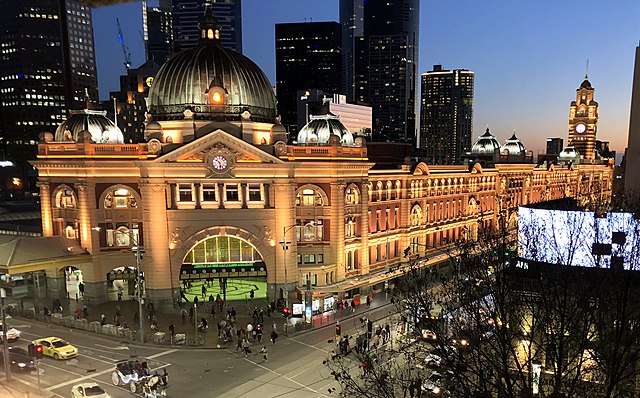
Many buildings in Australia are famously recognized for their appearance during the daylight hours, but the Flinders Street Station is one that features an incredible aesthetic at night as well.
This beautiful structure is located in the heart of Melbourne’s business district and sits at the corner of Flinders and Swanson streets, which are busy with tourists and local residents who live and work in the area.
The Flinders Street Station has a long, well-known history to those within the city of Melbourne as it once served as the city’s main center of transportation into and out of the western Australia metropolitan area.
It was designed by William Salway, a little-known British architect who ended up winning the design competition for the Flinders Street Station that was held in 1883.
Prior to this, however, the site was home to another, smaller railway station which the city outgrew just three decades after it was established.
The building currently serves as a main center of the metropolitan rail network that weaves its way throughout Melbourne.
At night, the Flinders Street Station is illuminated by a number of lights along the exterior that are strategically-placed to bring out the beauty in the Victorian-style building.
6. Shrine of Remembrance
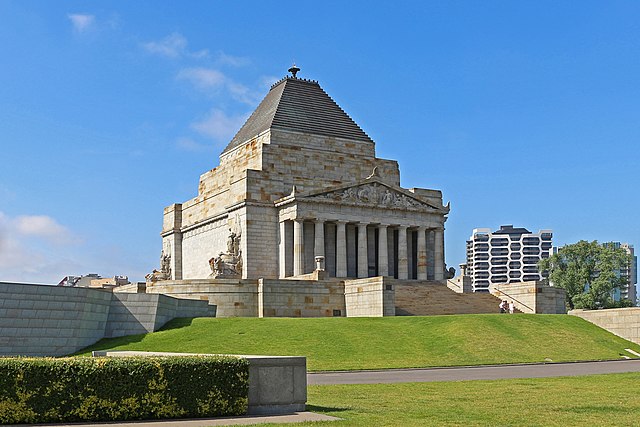
One of the most notable landmarks in Australia is the Shrine of Remembrance, which is located in the Kings Domain section of Melbourne.
This large, majestic monument was built to memorialize and commemorate the soldiers of Victoria who honorably served in World War II, but it now stands as a monument to all Australian soldiers who have served in wars and lost their lives.
The Shrine of Remembrance was designed by Phillip Hudson and James Wardrop who were both architects and veterans of Australia’s armed forces. The plans for the shrine began to be developed in the late 1910’s and early 1920’s and construction eventually began later in that same decade.
It was finally finished in 1934 after workers and architects, as well as officials were forced to deal with heavy criticism for allowing the design to go forward after Hudson and Wardrop won the contest that was held more than a decade prior.
Today, the Shrine of Remembrance is one of the most-visited war memorials in Australia and typically has about 1 million people each year. The classical style that it was designed according to is one that many find appealing, but others believe to be fitting for the memorial.
7. Council House, Perth
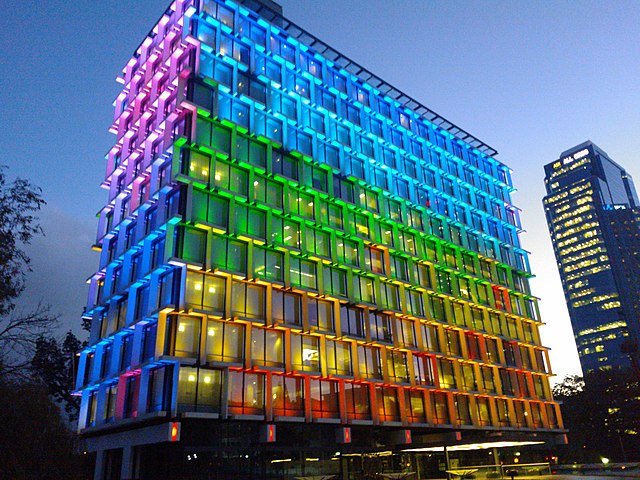
One of the most well known modernist-style buildings in Australia is the Council House, Perth. This 13-story office building stands as a historic structure that has served a variety of purposes over the years since it was initially built.
The Council House, Perth was designed by Australian architects, Jeffrey Howlett & Don Bailey, who gave the building a distinctly modernist aesthetic, both inside and out.
The building sits on what was once the site of the Old Government Offices or Public Offices, which is why the structure is now known as Council House, Perth.
The first building was constructed in the 1830’s, but it was eventually decided by the city of Perth that the structure should be demolished, which drew widespread condemnation from the local residents.
Eventually, it was decided that the building would be renovated and this project started in 1961. It was finished two years later in 1963 and is considered to be one of the oldest-standing examples of modernist architecture from the mid-to-late 19th century.
8. Queen Victoria Building
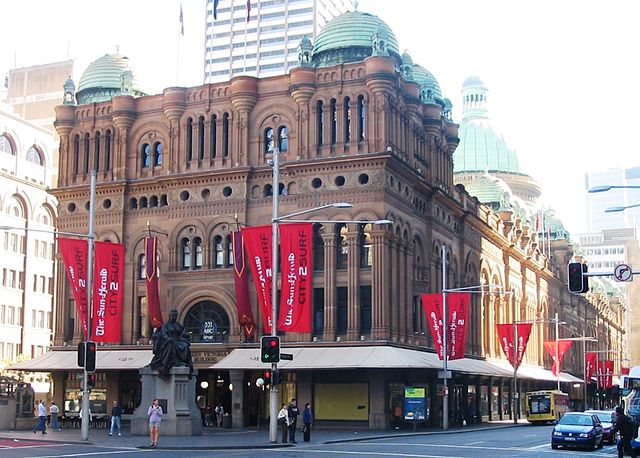
One of the most historic buildings in Sydney is the Queen Victoria Building, which is often known by the abbreviated name of “QVB” to many local residents of the city.
The Queen Victoria Building is a large structure that has been maintained over the years since it was originally built so that it has retained much of the former glory it once had when it opened at the end of the 19th century.
Also Read: Buildings in Sydney
The Queen Victoria Building in its current state was designed by widely-acclaimed Australian architect, George McRae. The building sits on the former location of what was known as the Sydney Markets, which were designed by Ambrose Hallen and built during the 1830’s.
The building in this location was eventually demolished and the Queen Victoria Building was built beginning in 1893.
This structure was finished just a few years later in 1898 and there have been numerous efforts to renovate and maintain the building, which was designed according to the Romanesque revival style.
9. Sydney Tower
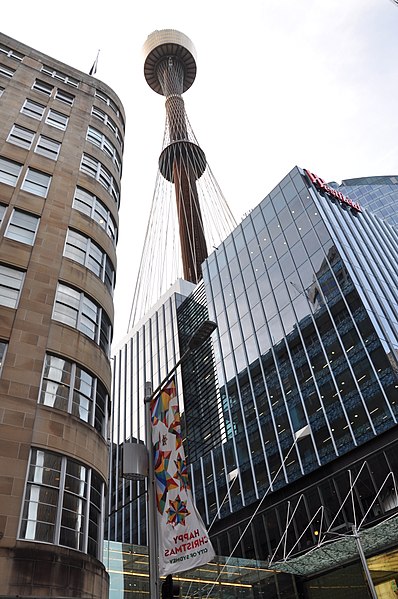
Another one of the Australian capital city’s most famous landmarks is also one of its tallest. The Sydney Tower is a very large tower that was originally constructed to serve as an essential part of the city’s communication infrastructure as it could transmit television and radio signals to a massive section of land surrounding Sydney.
The Sydney Tower is located in the heart of downtown Sydney and was designed by the great architectural firm, Donald Crone and Associates, which is now known simply as Crone Architects.
The tower features an office building section on the lower half, which began to be constructed in 1970 and the tower portion was finally started half-a-decade later in 1975. The structure was fully completed in 1981 and opened in that same year.
The Sydney Tower stands at 915 feet at the top floor, but the antenna spire measures 1,014 feet from the ground. Today, it is recognized as a major landmark and has become a notable tourist destination for anyone visiting the city of Sydney.
10. Eureka Tower
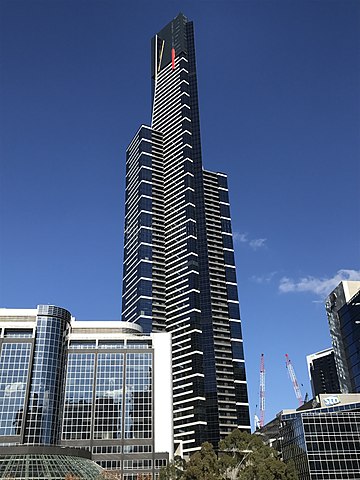
Another one of Australia’s best buildings is also a well-known skyscraper that sits in Melbourne. The Eureka Tower’s distinct design has made it one of the most well-known landmarks in Melbourne in the few years since it was built.
Designed by Fender Katsalidis, the Eureka Tower once held the titles of the world’s tallest residential tower, as well as the tallest building in Melbourne until 2019.
Construction began on the tower in 2002 and it was completed in 2006. The building stands at 974 feet in height and draws a considerable number of visitors to the top floor’s observation deck.

